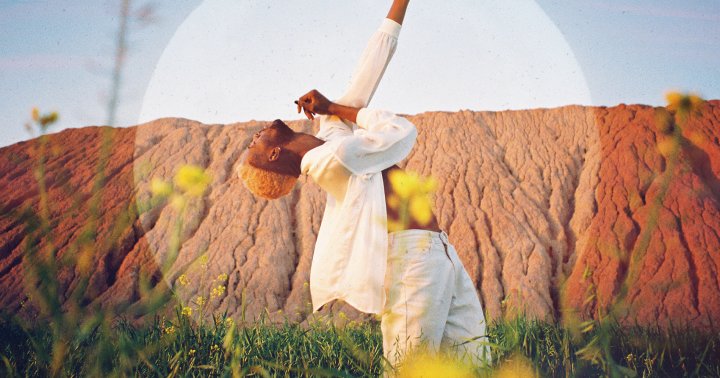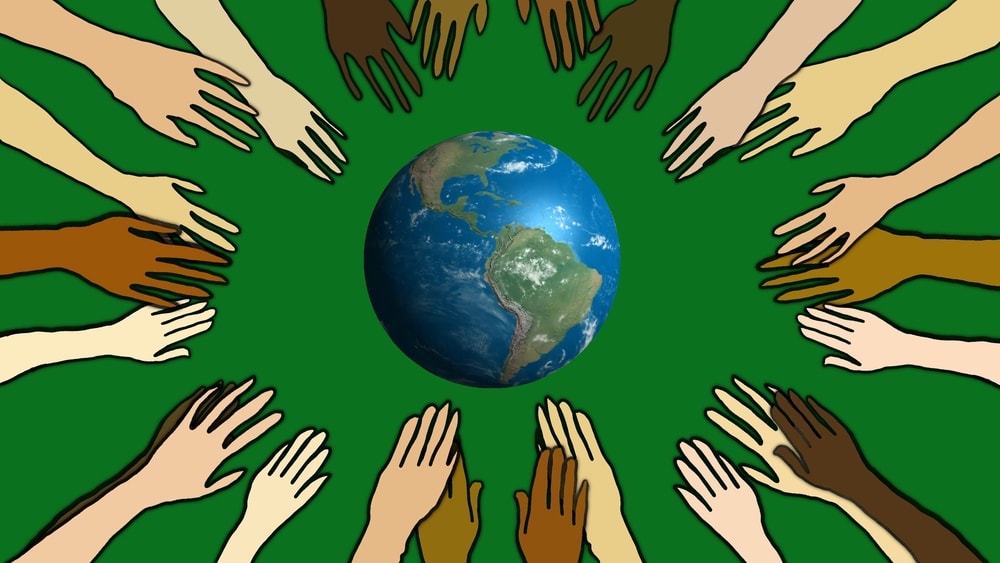7 Ways Chakra Healing Can Help You Cope With Past Traumas
When we experience any sort of trauma throughout our lives, which can range from a breakup to a death (and anything between and beyond), our bodies, minds, and biofield can hold and remember that energy for hours, days, months,...

When we experience any sort of trauma throughout our lives, which can range from a breakup to a death (and anything between and beyond), our bodies, minds, and biofield can hold and remember that energy for hours, days, months, and oftentimes, years. Enter: chakra healing.
Chakra healing has the power to positively affect change in the body and mind, especially when related to trauma. But before we get into this powerful practice, let’s explore trauma itself.
How Does Trauma Affect Us?
In Dr. Bessel Van Der Kolk’s bestseller, The Body Keeps the Score, he explains, “If the memory of trauma is encoded in the viscera, in heartbreaking and gut-wrenching emotions, in autoimmune disorders and skeletal/muscular problems, and if mind/brain/visceral communication is the royal road to emotion regulation, this demands a radical shift in our therapeutic assumptions.”
Each of the 7 chakras has corresponding years during which they are developed.
Dr. Van Der Kolk is also the author of numerous studies on the impact that traumatic experiences have on humans, both mentally and physically.
His 1994 study by the same name as his book, explores the stress responses and hormones that our bodies innately produce after a traumatic event and how the initial event and the memories of that event affect us indefinitely afterward.
You Are Not Your Past Traumas: These 4 Tips Will Help You Heal and Move On
Where and how the traumas may manifest varies depending on the severity of the trauma, how the person is able to respond in the moment, how they are able to process the event(s) afterward, and many other factors.
What Is Chakra Healing?
Chakra healing involves finding balance and harmony in the seven primary chakras, or energy centers, within and around the body. Each of these chakras are correlated to different physical and emotional aspects of one’s being.
Chakra 101: An Introduction to the 7 Chakras
In chakra studies, you may learn the concept that each chakra also has corresponding years during which it’s developed. These years also happen to be grouped in seven-year increments starting from the Root Chakra when we are born, and moving up to the Crown Chakra by age 49.
For example, from ages eight to 14, we develop our Sacral Chakra and during these years we typically experience puberty, develop our own relationships and friendships outside of the family unit, and begin to really explore our creativity.
If we’re hit with a life-altering experience during these years, that energy may manifest in our reproductive organs and may show up as sexual repression or hormonal imbalances.
When working through your own personal healing process, the age during which a specific trauma(s) occurred can offer another really helpful perspective – and you can take action by working with various healing tools to find more balance in the specific chakra that that age/time is connected to.
It’s also fascinating to consider where you are in the present moment in your development: Are you a 32-year-old strengthening your Throat Chakra by finding your voice and learning how to speak your truth? Are you a 26-year-old working to open yourself up to a deeper love?
Here’s How to Heal Your Throat Chakra After a Traumatic Experience
7 Primary Chakras, Their Key Developmental Years, and How to Practice Chakra Healing for Each Post-Trauma:
Below is a list of each of the seven primary chakras along with their key developmental years, possible ways in which a trauma experienced during those years could manifest, as well as a chakra healing tool to move energy around in that specific area of the body.
Please note that each of the below are merely suggestions for ways to release stagnant energy and should be used in conjunction with other healing modalities that are appropriate.
The intention here is to offer a new lens through which to view your trauma(s) and share a new perspective and tools to consider incorporating into your healing journey – and maybe even enjoy the process!
1. Root or Muladhara Chakra
Our Root Chakra is located at the base of the spine and is dominated by our sense of fear and safety. It governs both survival and abundance issues.
Key Developmental Years: 0 to 7, during which time we are generally reliant on others for our basic needs to survive.
How trauma might manifest: Depression, paranoia, issues with the hips, legs, or feet.
Suggested chakra healing tool: EMDR. EMDR stands for Eye Movement Desensitization and Reprocessing and can be a really powerful way to relieve and process traumatic memories and PTSD.
This psychotherapy technique is conducted with a licensed professional with the goal to shift how specific memories are stored in your brain.
By doing a series of eye movements while recalling past experiences with the therapist, you can desensitize your response to those painful memories. EMDR, according to a review of 24 different studies, has the ability to relieve both the emotional and physical symptoms of trauma and PTSD.
2. Sacral or Svadhisthana Chakra
Located just below the navel, the Sacral Chakra is the seat of sexual energy, creative power, pleasure, and emotions.
Key Developmental Years: 8 to 14, during which time we typically experience puberty, relationships outside of the family, and creative exploration.
How trauma might manifest: Hormonal imbalances, sexual repression, frustration, issues with the reproductive organs.
Suggested chakra healing tool: Somatic therapy. Somatic therapy sessions focus on physical and psychological traumas through grounding techniques, movement, and breathing exercises.
The exact experience(s) vary depending on the therapist you work with and can be facilitated one-on-one or in groups and you can search for somatic therapy sessions where you live.
3. Solar Plexus or Manipura Chakra
The Solar Plexus Chakra is located a few inches above the navel, in the physical center of the body and is correlated to our gut instincts, sense of identity, and personal power.
Key Developmental Years: 15 to 21. During these years we generally develop our ego, sense of self, and personal identity.
How trauma might manifest: Anxiety, low self-worth, digestive problems.
Suggested chakra healing tool: Diet overhaul. On the physical level, our solar plexus is responsible for our stomach and digestive system so it’s no surprise that what we put into our bodies can have a direct effect on the energy there.
To gain more clarity in the gut, check in with your diet and see what kinds of foods you might be able to add or eliminate to clean things up.
4. Heart or Anahata Chakra
The Heart Chakra is located in the center of the chest and is known as the bridge between the upper, more ethereal chakras and the lower, more physical chakras. It is correlated to our sense of love, empathy, forgiveness and connection with others.
Key Developmental Years: 22 to 28, during which time we typically learn the art of being more compassionate with ourselves and others and open ourselves up to experience true love.
How trauma might manifest: Consistent feelings of grief, jealousy, asthma, issues with the heart or lungs.
Suggested chakra healing tool: Breathwork. Breathwork is an amazing tool to work with to help with physical, emotional, mental, and spiritual traumas. It engages the nervous system to release tension and process emotions.
There are many different types of breathwork you can try from Wim Hoff methods to Shamanic Breathwork so it definitely needs to be a personal exploration to find what resonates most with you.
5. Throat or Vishuddha Chakra
The Throat Chakra is located, you guessed it, at the front of the throat and is the seat of communication and self-expression.
Key Developmental Years: 29 to 35, during these years we typically begin to find our voice and share our truth more confidently. We also tend to become less tolerant of people who are not on our wavelength.
How trauma might manifest: Frequent sore throats, colds, problems with the thyroid.
Suggested chakra healing tool: Vocal toning, singing. Our voice is an incredible (and free!) healing tool and is a really powerful instrument to tap into and process emotions.
Vocal toning and singing are also both great ways to connect with the breath, relax the body and move energy around the Throat Chakra.
You don’t have to be a “good” singer to experience the benefits of using the voice to heal – from belting a favorite song in the privacy of your own car, to giving yourself a few minutes per day to do some audible exhales.
6. Third Eye or Ajna Chakra
Our Third Eye Chakra is in the center of the forehead just above the eyebrows and is the center for psychic connection, higher consciousness, and emotional and spiritual love.
Key Developmental Years: 36 to 42, during which time we begin to develop wisdom and insight and more deeply understand the duality in the world.
How trauma might manifest: Sinus issues, nightmares, mental fogginess, inability to concentrate, and issues connecting to your intuition.
Suggested chakra healing tool: Dreamwork. As Thomas Edison famously said, “Never go to sleep without a request to your subconscious mind.”
Connecting more to your dreams is an amazing way to open up the communication between your conscious mind and your subconscious mind and intuition.
There are tons of avenues you can take to work with your dreams, but a good first step is to start asking your subconscious mind to give clarity on a specific issue you’re dealing with and then designate a journal for writing your dreams down as soon as you wake up.
Keep the journal on the bedside table and jot down the main points of the dream before you even get out of bed.
7. Crown or Sahasrara Chakra
The Crown Chakra is located at the middle and top of your head and is related to our connectedness to each other and the universe. It is our direct connection to Spirit and gives us access to higher states of consciousness.
Key Developmental Years: 43 to 49, during which time we become more aware of where we are, the energy around us, and our connection to Spirit.
How trauma might manifest: Feelings of being alone, unsupported, disconnected from the divine, migraines, neuroses, dizziness.
Suggested chakra healing tool: Finding and connecting with others in your community.
Whether it be attending church, a women’s group/circle, a meditation center, or even a yoga studio, spending meaningful time with others with aligned beliefs can be a really powerful healing tool to help balance the Crown Chakra. This can be done virtually, but in-person is definitely preferred!
The Takeaway on Chakra Healing
There is a world of information on each of the above mentioned chakra healing tools, so get curious about them. Learn more about what they entail and what effects they may have on your healing journey.
Because our seven main chakras run along the spinal cord, and are connected to specific areas of our nervous system, chakra healing can be a truly life-altering and expanding process mentally, spiritually, and emotionally.
All included information is not intended to treat or diagnose. The views expressed are those of the author and should be attributed solely to the author. For medical questions, please consult your healthcare provider.
Ready for Some Serious Chakra Healing?
Practice Chakra Awakening with Carrie Varela on YA Classes!

With Carrie Varela
6 Classes | All Levels

 ValVades
ValVades 
































